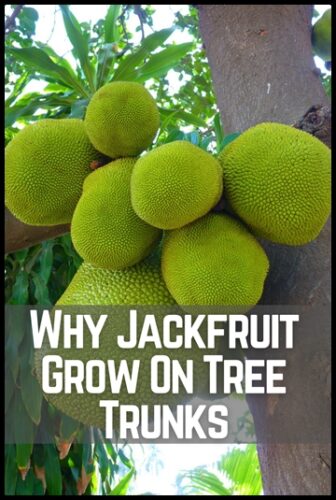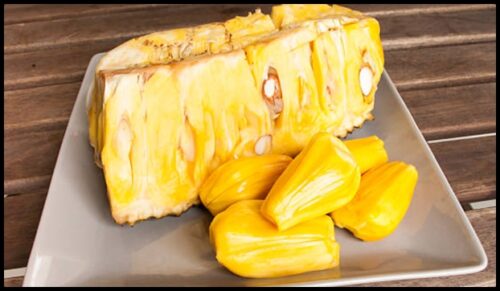If you have a jackfruit tree, you are probably wondering why the fruit grows on the tree trunks and not more so on the branches.
Well, there is a reason why jackfruit grows on tree trunks and not branches, so let’s get right into it.
Did you know that Jackfruit is the only fruit that grows from the trunk?
Yes, so what makes this possible?
Most jackfruit trees bear their fruits on the trunk or the base of older branches of the tree, away from where the female flowering usually emerges.

Why does jackfruit grow on tree trunks?
The reason why jackfruit trees bear their fruit on the trunk or older, mature branches is that they are strong enough to hold the fruit until it ripens. Nevertheless, given that jackfruit is the heaviest among the tree-borne fruits, it can reach up to 35 lb. in weight.
What Is a Jackfruit?
Jackfruits are the largest-borne fruit in the world; they can reach up to 50 pounds in weight, up to 36 inches long, and 20 inches in diameter. The exterior of the jackfruit compound fruit is light green to yellow when it ripens.
The jackfruit interior looks and consists of large edible bulbs of yellow flesh that have a similarly flavored flesh and enclose a smooth, oval, light-brown seed.
Most jackfruit seeds are 3-4 to 1-2 inches long and 1-2 to 3-4 inches thick, and they are white and crisp within. There can be up to 100 or more seeds found in a single jackfruit, which are viable for no more than 3 or 4 days.
How Do You Know When a Jackfruit Is Ripe?
When jackfruits are mature and ripe, the unopened jackfruit emits a strong, notable odor, resembling that of decayed onions, while the pulp of the opened fruit smells like pineapple and banana.

There are two main varieties of jackfruits. In the other variety of fruit, it has small, fibrous, soft, mushy, but sweet carpels with a texture that tastes somewhat similar to a raw oyster.
However, the other variety is crisp and almost crunchy, though it does not quite have the same sweetness. This variety is more important commercially and is more palatable to western tastes and countries.
Where did jackfruit originate from?
Jackfruits are known to be indigenous to the rain forests of the Western Ghats of India. They spread early on to other parts of India’s territories, Southeast Asia, the East Indies, and ultimately throughout the Philippines. It is often planted in central and eastern Africa and is fairly popular in countries like Brazil, the Caribbean, and Surinam.
How adaptable is Jackfruit?
Jackfruit trees grow best in humid tropical climates. A mature jackfruit tree can also survive temperatures of about 27 °F in southern Florida. However, these were frozen to large limbs.
Younger, unmatured jackfruit trees are likely to die if the temperatures are below 32 F. However, unlike its other relatives, such as breadfruit, the jackfruit is not injured by cool or cooler weather several degrees above freezing.
Jackfruit trees that bear today in the USA, such as in southern Florida, are valued mainly as curiosities. There are also several jackfruit trees known to be planted in Asian countries, where an exhibit is located at the San Diego Zoo. What they will do or how high they will grow remains a mystery. Nonetheless, jackfruit trees are too large to grow in containers like other plants.
So, if you have heard about jackfruit and have not tried it yet, you are missing out big time. There are also many crucial benefits of jackfruit for the body, such as cancer prevention.
Finally, jackfruit trees generally grow big, so they are not suitable for containers. You will need lots of yard space to grow a jackfruit tree.


